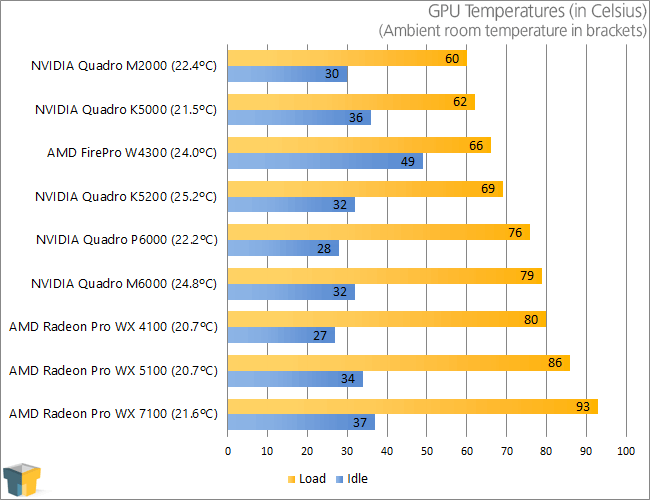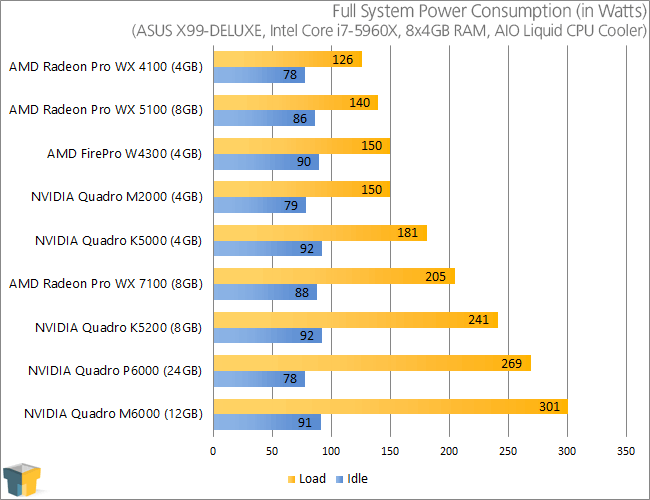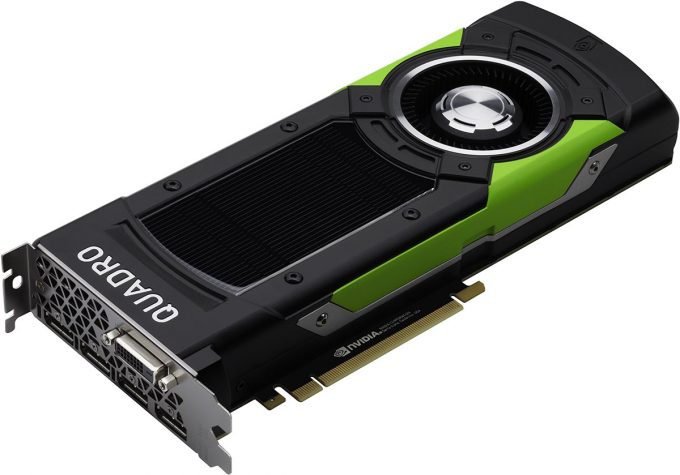- Qualcomm Launches Snapdragon 4 Gen 2 Mobile Platform
- AMD Launches Ryzen PRO 7000 Series Mobile & Desktop Platform
- Intel Launches Sleek Single-Slot Arc Pro A60 Workstation Graphics Card
- NVIDIA Announces Latest Ada Lovelace Additions: GeForce RTX 4060 Ti & RTX 4060
- Maxon Redshift With AMD Radeon GPU Rendering Support Now Available
NVIDIA’s Fastest Graphics Card Ever: A Look At The Quadro P6000

NVIDIA’s latest and greatest-ever workstation graphics card has arrived: Quadro P6000. This top-tier card is built around NVIDIA’s Pascal architecture, which is produced on a 16nm FinFET process. The card boasts an impressive 3,840 CUDA cores, and not to mention 24GB of super-fast GDDR5X. Let’s check it out.
Page 7 – Power, Temperatures & Final Thoughts
To test workstation graphics cards for both their power consumption and temperature at load, we utilize a couple of different tools. On the hardware side, we use a trusty Kill-a-Watt power monitor which our GPU test machine plugs into directly. For software, we use LuxMark to stress the card, and GPU-Z to record the temperatures.
To test, the area around the chassis is checked with a temperature gun, with the average temp recorded. Once that’s established, the PC is turned on and left to sit idle for five minutes. At this point, we open GPU-Z along with LuxMark. After its initial (automatic) render is complete, we kick off a 15 minute stress-test. Following this, we monitor the Kill-a-Watt for a minute to establish peak load wattage.


These results highlight some improvements I love to see from generation to generation. The Quadro P6000 is just about twice as fast as the M6000, yet it ran 4°C cooler in this stress test. And, if that wasn’t enough, it also drew 32W less at full load. You’ve gotta love progress.
Final Thoughts
When we’re handed the fastest product ever released in a certain product category, drumming up a conclusion isn’t too difficult. Nothing changes here. As it stands today, the Quadro P6000 is the fastest GPU NVIDIA’s ever produced; a 12 TFLOP monster in a single-GPU form-factor. And despite its huge performance, the P6000 draws less power than last-gen’s M6000, and it even runs a bit cooler, to boot.
Leading up to this review, I put a considerable number of hours into benchmarking the P6000, even more than I spent on the M6000. When I tackled the M6000, it came at a time when all of the software I tested with supported NVIDIA’s Maxwell architecture. I didn’t have the same luxury here with Pascal, as OctaneBench’s support for the architecture is coming soon, and the Iray performance I saw didn’t scale as well as I expected it to (even though considerable gains were seen).
As with all workstation graphics cards, understanding your needs and wants is of utmost performance. In some cases, the P6000 isn’t much (or any) faster than the last-gen M6000, despite its performance being spec’d 71% better. In AutoCAD, we saw that there is a definite point of diminishing returns. In 3D tests, the P6000 just about decimated the M6000.
Ultimately, the Quadro P6000 is cutting-edge hardware, and it requires software to catch up, either by way of the plugins or the entire suite. 3ds Max didn’t officially support Pascal until 10 or so days ago, and as mentioned above, OctaneBench (which is built around CUDA) has a new version coming.
Conveniently, I’ll be rebenchmarking our fleet of workstation graphics cards in a month or two, as a dedicated PC is going to be built around their testing (up to this point I’ve used our gaming GPU testbed as a dual-purpose machine), which will also bring us up to speed on the OS front (Windows 7 grew long in the tooth ages ago). At that time, performance gains on Pascal are likely to be notable.
While the gains seen in real-world tests varied, SiSoftware’s Sandra helped bring some sanity to our results madness. With it, we saw dramatic gains in performance in single-, double-, half-, and quad-float, and that carried on over to the more specific financial, scientific, and crypto tests. In some cases, the P6000 performed better than 2x over the M6000, although a year-and-a-half worth of driver improvements helped out a bit with that as well.
At the end of the day, the Quadro P6000 is the fastest Quadro ever created, and in fact the fastest GPU the company’s ever created. NVIDIA has provided the hardware; you just need to provide the software and workloads to take full advantage of this beast.
Pros
- The fastest graphics card NVIDIA has ever produced.
- Enormous 24GB framebuffer.
- Built on new 16nm FinFET process, and includes GDDR5X ECC memory.
- Supports up to 8K resolution; 4x 5K/4K @ 60Hz.
- Includes 4x full DisplayPort 1.4 connections.
- Supports NVENC encode, HEVC decode, Iray, Iray VR, Mosaic, and NVIDIA nView.
Cons
- As with all top-end Quadros, the P6000 is expensive (~$5,000 USD).

NVIDIA Quadro P6000
Support our efforts! With ad revenue at an all-time low for written websites, we're relying more than ever on reader support to help us continue putting so much effort into this type of content. You can support us by becoming a Patron, or by using our Amazon shopping affiliate links listed through our articles. Thanks for your support!






